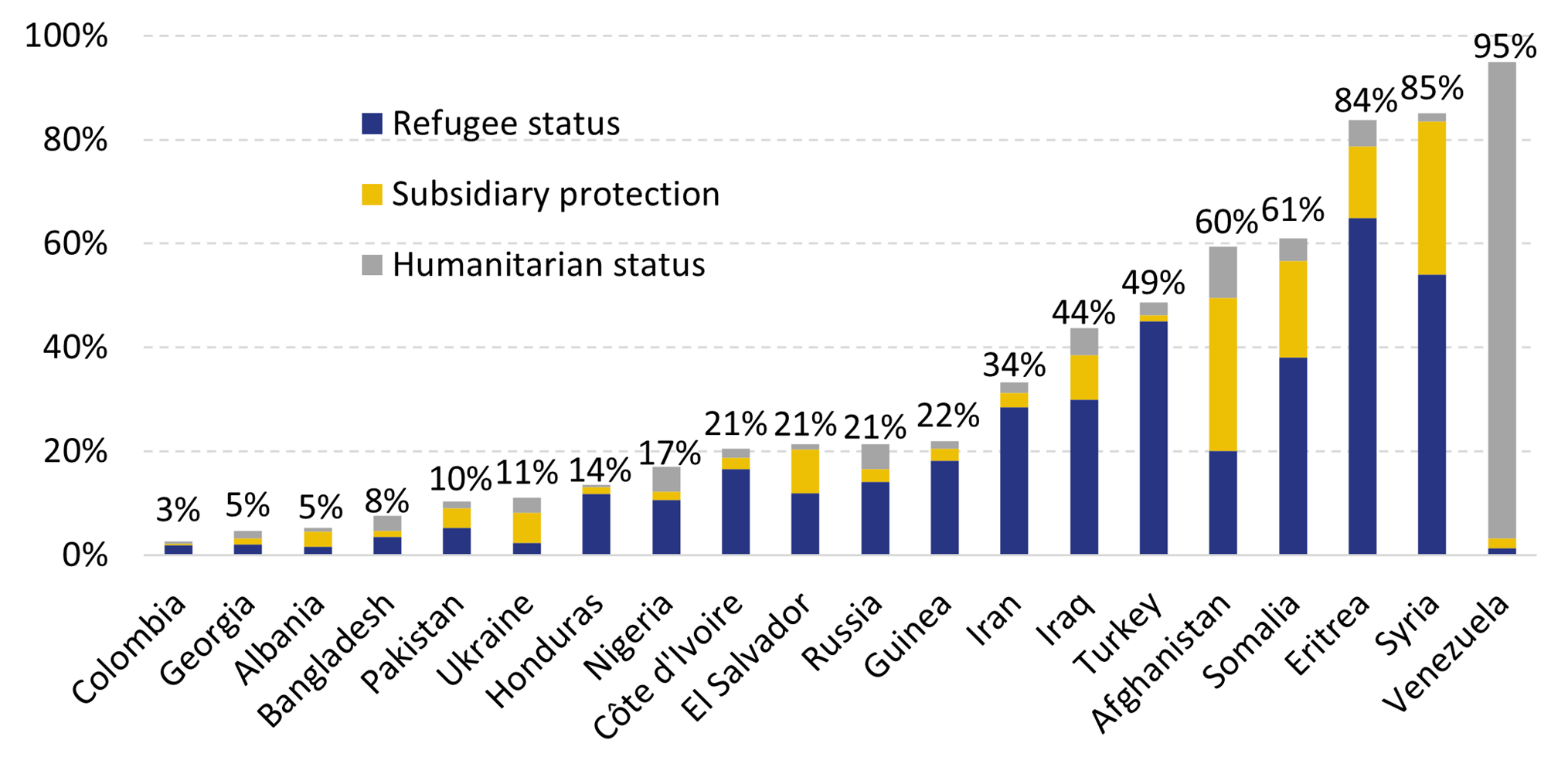 In 2020, applicants from Venezuela had the highest recognition rate for first instance applications in EU+ countries at 95%. This was followed by Syrians (85%) and Eritreans (84%). High recognition rates were also reported for nationals of Somalia (61%), Afghanistan (59%) and Turkey (49%) (see Figure 4.21).
In 2020, applicants from Venezuela had the highest recognition rate for first instance applications in EU+ countries at 95%. This was followed by Syrians (85%) and Eritreans (84%). High recognition rates were also reported for nationals of Somalia (61%), Afghanistan (59%) and Turkey (49%) (see Figure 4.21).
 |
Venezuelans, Syrians and Eritreans had the highest recognition rates at first instance |

Note: These 20 nationalities received the highest number of first instance decisions issued in 2020 in EU+ countries.
Source: Eurostat [migr_asyappctzm] as of 28 April 2021.
In contrast, for the majority of the nationalities that received the highest number of first instance decisions, recognition rates did not exceed 22%. For example, nationals of Albania, Colombia and Georgia only had recognition rates ranging from 3% to 5%.
Among the top 20 nationalities, one-half or more of positive decisions granted subsidiary protection for Afghans, Albanians and Ukrainians. Applicants from El Salvador, Somalia and Syria also had high shares of subsidiary protection, although they had overall higher shares of refugee status. In the particular case of Venezuelans, almost all positive decisions granted humanitarian status. Venezuelans in Spain alone accounted for three-quarters (45,000) of all cases in which humanitarian status was granted in 2020.
Outside the top 20 nationalities, recognition rates were high notably for Burundian (65%), Chinese (61%), South Sudanese (64%), Yemeni (77%) and stateless applicants (57%). However, low recognition rates were again more common. Both within and outside the top 20 nationalities, recognition rates were low particularly among citizens of countries which are exempt from visa requirements in EU+ countries. Apart from Colombia and Georgia, this was seen for applicants from the Western Balkan countries, including Albania, Bosnia and Herzegovina, Montenegro, North Macedonia and Serbia, as well as some Latin American countries, including Argentina, Chile and Peru.
Recognition rates have continued to be high for Syrians and Eritreans over the last few years. The same holds true for nationals of Yemen, although their rate has steadily declined from a peak at 95% in 2017. Recognition rates have been increasing for Afghans (from 48% in 2017 to 60% in 2020) and Nicaraguans (6% to 25%). For Belarusian applicants, the rate surged to 30% in 2020, from about 13% in previous years. Belarusians, Chinese and Nicaraguan applicants had the highest recognition rates in 2020 since at least 2008. In contrast, the rate for Colombians was the lowest since at least 2008.




